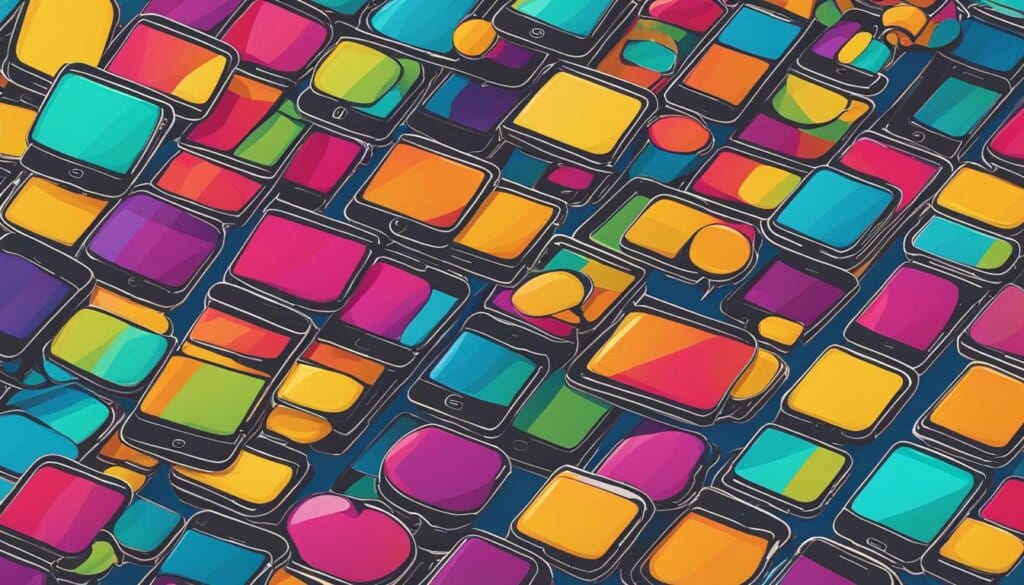Table of Contents
RCS, or Rich Communication Services, is a next-generation text messaging protocol that aims to enhance communication with richer, more interactive features. Traditional text messaging (SMS) and multimedia messaging (MMS) have limitations in terms of message length, image quality, and advanced features like group messaging and read receipts. The history of text messaging dates back over 30 years, but with the rise of smartphones and messaging apps like iMessage and WhatsApp, there was a need for an upgrade in text messaging technology.
RCS was proposed in 2007 but gained traction when Google acquired Jibe Mobile in 2015 and started leading the charge into an RCS future. While RCS is designed to replace SMS, it is unlikely that SMS will go away completely due to its reliability and ubiquity across devices and carriers. RCS is supported by various carriers worldwide and is gradually being adopted as the default messaging app on Android devices.
With RCS, text messaging is set to enter a new era of communication, offering users a more immersive and interactive experience. Stay tuned as we explore the evolution of text messaging and how RCS sets itself apart from SMS and MMS.
The Evolution of Text Messaging: From SMS to RCS
SMS, or Short Messaging Service, was developed in 1984 but didn’t become mainstream until the early 1990s. It offered a reliable and universal method of sending text messages across different devices and carriers. MMS, or Multimedia Messaging Service, was introduced in 2002 to support multimedia content like images and videos, but it had limitations in terms of resolution and file size. The popularity of modern smartphone messaging apps with advanced features like group messaging, read receipts, and typing indicators highlighted the limitations of SMS and MMS. This led to the development of RCS, which aims to address these limitations and provide a more sophisticated messaging standard for smartphones.
RCS, or Rich Communication Services, is the next-generation text messaging protocol that brings richer, more interactive features to enhance communication. While SMS and MMS paved the way for mobile messaging, they have certain limitations that prevent them from keeping up with the advanced capabilities of modern smartphone messaging apps.
Smartphone messaging apps like iMessage and WhatsApp have revolutionized the way we communicate by offering features such as real-time delivery receipts, large media file sharing, and group messaging. These apps have become the go-to choice for users seeking a more interactive and feature-rich messaging experience. However, SMS and MMS, being legacy technologies, struggle to provide the same level of functionality and user experience.
RCS is designed to overcome the limitations of SMS and MMS by introducing a wider range of features and capabilities. With RCS, users can enjoy various interactive features, including read receipts, typing indicators, and the ability to see when friends are online or typing a response. It also allows for larger file sharing, with support for files up to 100MB in size. Additionally, RCS is not limited by the character limits of SMS, providing a more flexible and expressive messaging experience.
By leveraging the power of modern smartphone messaging apps and addressing the shortcomings of legacy technologies, RCS aims to provide a messaging standard that offers a seamless and engaging communication experience for users.
| Legacy Technologies | Limitations | Modern Smartphone Messaging Apps |
|---|---|---|
| SMS | – Limited by character length – Lack of advanced features |
– Real-time delivery receipts – Group messaging – Advanced media sharing |
| MMS | – Limited resolution and file size | – Read receipts – Typing indicators – Online status indicators |
| RCS | – Overcomes limitations of SMS and MMS – Provides a more sophisticated messaging experience |
|
What Sets RCS Apart from SMS and MMS?
RCS messaging offers several advantages over traditional SMS and MMS. Unlike SMS, which relies on a voice-only cellular connection, RCS requires a data connection, similar to messaging apps like iMessage and WhatsApp. This enables features like read receipts, typing indicators, and the ability to see when your friends are online or typing a response. RCS also allows for larger file sharing, with support for files up to 100MB in size. Additionally, RCS messaging is not limited by character limits, unlike SMS which has a maximum of 160 characters per message. These features make RCS messaging more interactive and user-friendly compared to SMS and MMS.
With RCS, messaging becomes more than just exchanging simple texts or media. It becomes a dynamic and immersive communication experience. The ability to see read receipts and typing indicators provides users with real-time feedback and a sense of presence in the conversation. Larger file sharing capabilities allow for seamless sharing of high-quality photos, videos, and documents, enabling richer multimedia communication. Say goodbye to the frustration of sending multiple short messages due to character limits; RCS removes this constraint, allowing for more expressive and detailed conversations.
RCS’s reliance on a data connection not only allows for enhanced features but also ensures that messages are sent and received more reliably and quickly. Gone are the days of waiting for blurry or pixelated images to load; RCS delivers high-resolution media files with ease. Furthermore, RCS messaging allows for group chats with a more cohesive and interactive experience. Features like suggested actions, carousels, and quick reply options provide intuitive ways for users to engage and interact within group conversations.
Switching to RCS messaging opens up a world of possibilities for users, offering a truly modern messaging experience. Whether it’s collaborating on a project with colleagues, planning an event with friends, or simply staying connected with loved ones, RCS empowers users to communicate in a more engaging and meaningful way.
| Key Features | RCS | SMS | MMS |
|---|---|---|---|
| Requires data connection | ✓ | ✕ | ✕ |
| Read receipts | ✓ | ✕ | ✕ |
| Typing indicators | ✓ | ✕ | ✕ |
| File sharing (up to 100MB) | ✓ | ✕ | ✓ |
| Character limits | No | Yes (160) | Yes (varies) |
The Rise of RCS: Adoption and Support
RCS, or Rich Communication Services, has gained widespread support from various carriers and messaging apps worldwide. One of the key players in promoting RCS is Google, which has integrated RCS into their Google Messages app as the default messaging app on Android devices. This move has significantly contributed to the adoption and popularity of RCS among Android users.
Samsung, despite having its own RCS-compatible app called Samsung Messages, aligns with Google’s approach and utilizes the same RCS standard. This ensures compatibility and seamless communication between Android users using different messaging apps.
Other carriers, such as AT&T, T-Mobile, and Verizon in the US, have also recognized the potential of RCS and made plans to adopt the technology, offering it to their customers. This broad carrier support further strengthens the reach of RCS and paves the way for its widespread adoption.
“RCS brings together carriers and messaging apps to provide a unified and improved messaging experience for users.”
However, an initiative aimed at collaboration between carriers, known as the Cross Carrier Messaging Initiative (CCMI), ultimately fell apart. This has shifted the power dynamics in the RCS ecosystem, leaving Google with a more dominant role. Google’s active involvement in promoting and implementing RCS has positioned them as a driving force behind the technology’s growth and development.
To enhance the security and privacy of RCS messaging, Google has introduced its own extension to the standard. This extension supports end-to-end encryption in Google Messages, offering users an added layer of protection for their conversations and data.

Key Players in RCS Support
| Carriers | Messaging Apps |
|---|---|
| Google-backed carriers (AT&T, T-Mobile, Verizon) | Google Messages (default messaging app on Android) |
| Samsung | Samsung Messages (RCS-compatible app) |
| Other global carriers | Various RCS-enabled messaging apps |
Benefits and Potential of RCS Messaging
RCS messaging offers numerous benefits and vast potential for both businesses and users. With features like verified senders, read receipts, and typing indicators, RCS provides users with a superior messaging experience. But that’s not all! Users can also send high-quality multimedia content such as photos, videos, and GIFs directly through messages, enhancing the overall communication experience. Moreover, group chats are now more streamlined, offering increased personalization options for users.
For businesses, RCS messaging opens up new communication opportunities and provides a more engaging way to connect with customers. With RCS, businesses can deliver real-time updates, account alerts, personalized recommendations, and promotions and specials. The interactive and personalized nature of RCS messaging helps businesses improve customer engagement, drive conversions, and enhance the overall user experience.
Enhanced User Experience
- Verified senders, read receipts, and typing indicators ensure a secure and reliable messaging experience.
- Send high-quality multimedia content like photos, videos, and GIFs directly through messages.
- Streamlined group chats with more personalization options for a better user experience.
Unleashing Business Potential
- Deliver real-time updates, account alerts, personalized recommendations, and promotions and specials.
- Engage with customers in a more interactive and personalized manner.
- Drive conversions and improve customer satisfaction.
“RCS messaging allows businesses to create a more engaging and personalized communication experience, leading to improved customer loyalty and satisfaction.” – Jennifer Smith, Marketing Director at ABC Corporation
With the incredible benefits and potential that RCS messaging offers, businesses can seize the opportunity to revolutionize their communication strategies and connect with customers in a more interactive and meaningful way.
RCS Messaging Strategy: Tips for Success
To create a successful RCS messaging strategy, businesses need to focus on problem-solving and effective communication with their customers. Identifying the specific problems to solve or messages to convey is a crucial first step.
Taking inspiration from past successful campaigns can provide valuable insights into what works and what doesn’t. Incorporating new features and interactivity into RCS messages can make them more engaging and impactful, ensuring a higher chance of success.
Utilizing customer data and profiles is key to personalizing messages and creating targeted campaigns. By tapping into customer preferences and behaviors, businesses can tailor their messages to resonate with their audience on a deeper level, increasing the chances of positive engagement.
The interactive elements offered by RCS messaging open up exciting possibilities for businesses. Suggested actions, carousels, and multimedia content can all bring a new dimension to customer interactions, streamlining the customer journey and driving desired outcomes.
Regularly analyzing campaign data and conducting A/B testing is crucial for optimizing RCS messaging strategies. By closely monitoring the performance of campaigns and testing different approaches, businesses can refine their strategies and maximize results.
Remember, RCS messaging is about creating meaningful connections with customers. By focusing on problem-solving, utilizing customer data, and leveraging the interactivity of RCS, businesses can develop impactful campaigns that resonate with their audience.
By following these tips, businesses can unlock the true potential of RCS messaging and achieve their goals.
| Benefits of RCS Messaging Strategy | Potential Challenges |
|---|---|
|
|
Getting Started with RCS Messaging
RCS messaging has gained significant adoption on numerous Android devices and is widely available in countries such as the USA, Canada, and various European countries. However, Apple has not yet fully embraced RCS on iOS devices, though they have announced plans to support the RCS Universal Profile in the future. As businesses look to implement RCS messaging into their communication strategies, it is vital to consider the availability and adoption of RCS in their target markets.
To enable RCS messaging on Android devices, businesses can simply follow the on-screen prompts within the Android Messages app. This user-friendly process allows for a smooth transition to RCS, unlocking its advanced features and capabilities. However, it’s worth noting that before implementing RCS messaging, businesses should assess the RCS adoption and support in their target markets to ensure wider reach and engagement with their audience.
With RCS messaging, businesses can leverage its advanced features, such as read receipts, typing indicators, and larger file sharing capabilities, to enhance their communication with customers. While iOS support for RCS is still in development, being prepared and having a solid understanding of the available options will aid businesses in crafting effective communication strategies and leveraging RCS messaging to its full potential.
FAQ
What is RCS?
RCS, or Rich Communication Services, is a next-generation text messaging protocol that aims to enhance communication with richer, more interactive features.
How does RCS differ from SMS and MMS?
RCS messaging requires a data connection, similar to messaging apps like iMessage and WhatsApp, and offers features like read receipts, typing indicators, and larger file sharing. Unlike SMS and MMS, RCS messaging is not limited by character limits.
Which messaging apps support RCS?
RCS is supported by various carriers worldwide and is gradually being adopted as the default messaging app on Android devices, including Google Messages and Samsung Messages.
What are the benefits of RCS messaging?
RCS messaging provides a better user experience with features like verified senders, read receipts, and typing indicators. It also allows for sending high-quality multimedia content directly through messages and offers more personalization options for group chats.
How can businesses use RCS messaging?
RCS messaging opens up new communication opportunities for businesses, allowing them to provide real-time updates, account alerts, personalized recommendations, and promotions. It can help improve customer engagement, drive conversions, and enhance the overall user experience.
What is the RCS messaging strategy for success?
Businesses should first identify the problems they want to solve or the messages they want to communicate to their customers. Incorporating new features and interactivity, utilizing customer data, and analyzing campaign data can help optimize RCS messaging strategies for better results.
How can businesses get started with RCS messaging?
RCS messaging is already available on many Android devices, with full coverage in several countries. However, Apple has not fully adopted RCS on iOS devices yet. Businesses can enable RCS messaging on Android devices by following the on-screen prompts within the Android Messages app.







